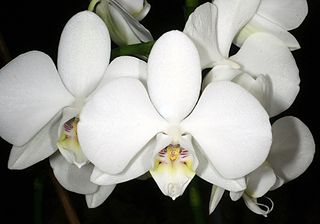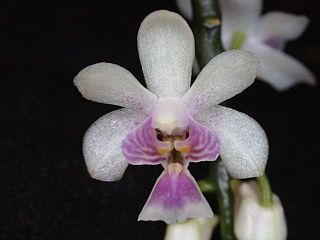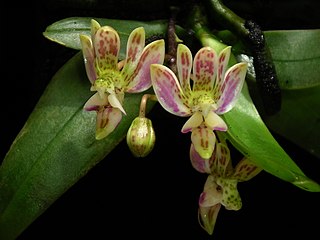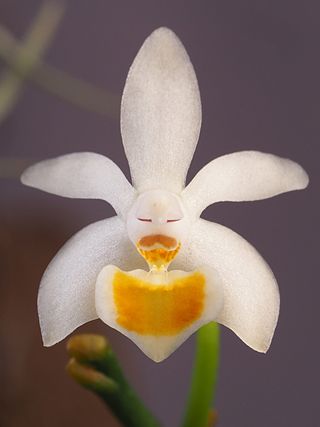
CITES is a multilateral treaty to protect endangered plants and animals from the threats of international trade. It was drafted as a result of a resolution adopted in 1963 at a meeting of members of the International Union for Conservation of Nature (IUCN). The convention was opened for signature in 1973 and CITES entered into force on 1 July 1975.

Wildlife conservation refers to the practice of protecting wild species and their habitats in order to maintain healthy wildlife species or populations and to restore, protect or enhance natural ecosystems. Major threats to wildlife include habitat destruction, degradation, fragmentation, overexploitation, poaching, pollution and climate change. The IUCN estimates that 27,000 species of the ones assessed are at risk for extinction. Expanding to all existing species, a 2019 UN report on biodiversity put this estimate even higher at a million species. It is also being acknowledged that an increasing number of ecosystems on Earth containing endangered species are disappearing. To address these issues, there have been both national and international governmental efforts to preserve Earth's wildlife. Prominent conservation agreements include the 1973 Convention on International Trade in Endangered Species of Wild Fauna and Flora (CITES) and the 1992 Convention on Biological Diversity (CBD). There are also numerous nongovernmental organizations (NGO's) dedicated to conservation such as the Nature Conservancy, World Wildlife Fund, the Wild Animal Health Fund and Conservation International.

Phalaenopsis amabilis, commonly known as the moon orchid or moth orchid in India and as anggrek bulan in Indonesia, is a species of flowering plant in the orchid family Orchidaceae. It is native to the Indonesia and Australia, and widely cultivated as a decorative houseplant. It is an epiphytic or lithophytic herb with long, thick roots, between two and eight thick, fleshy leaves with their bases hiding the stem and nearly flat, white, long-lasting flowers on a branching flowering stem with up to ten flowers on each branch.

Dendrobium antennatum, commonly known as the green antelope orchid, is an epiphytic orchid in the family Orchidaceae. It has cylindrical pseudobulbs with up to twelve leaves near their tips and up to fifteen white flowers with green petals and a white labellum with purple stripes. It grows in New Guinea and in tropical North Queensland where it is rare.

Dendrobium bigibbum, commonly known as the Cooktown orchid or mauve butterfly orchid, is an epiphytic or lithophytic orchid in the family Orchidaceae. It has cylindrical pseudobulbs, each with between three and five green or purplish leaves and arching flowering stems with up to twenty, usually lilac-purple flowers. It occurs in tropical North Queensland, Australia and New Guinea.

Phalaenopsis aphrodite is a species of orchid found from southeastern Taiwan to the Philippines.

Phalaenopsis deliciosa is a species of orchid occurring from the Indian subcontinent to Malesia and China. The species is a miniature epiphytic herb. The leaves are unique due to their undulate margins. This characteristic greatly simplifies the identification of the species, even when specimens are not currently flowering. The small flowers are usually slightly pink, but white and yellow forms exist as well. Old inflorescences, which are usually panicles or more rarely racemes, may continue to grow and form new flowers over several flowering periods.
Bulbophyllum rhodoglossum is a species of orchid in the genus Bulbophyllum, first described by Rudolf Schlechter in 1913 in Repertorium Specierum Novarum Regni Vegetabilis. It is an epiphyte growing in Papua New Guinea on trees in mountain forests around 1000 metres in elevation. The flowers are white, and the labellum red with a yellow tip.

Pelatantheria is a genus of flowering plants from the orchid family, Orchidaceae. Its species are distributed across China, Japan, the Indian Subcontinent and Southeast Asia.

Pelatantheria insectifera is a species of orchid occurring in Thailand, Laos, India. The species is a long-stemmed epiphytic herb. The small flowers have a relatively large, fleshy, bright pink labellum. The specific epithet "insectifera", meaning "insect bearing", refers to the flowers, which are indicated to resemble an insect. Thus, attraction of pollinators by means of sexual deception is implied, but to date no pollinator has been published. The flowers are produced from September to October on subsessile racemes, which are shorter than the leaves. The plants are almost entirely self-incompatible, but a small percentage of self-pollination events may be successful. After pollination the colour of the labellum changes from pink to red and the sepals and petals begin to close.
Pelatantheria rivesii is a species of epiphytic or lithophytic orchid occurring in China, Laos and Vietnam. This species closely resembles Pelatantheria insectifera bothin its vegetative and generative morphology. The commonly branched stems may reach lengths of 1 m and diameters of 7 mm. Few flowers are produced during October on short racemes, which do not exceed the length of the leaves. The flowers are small and fleshy and the sepals and petals are pale yellow and bear striped. The labellum is pink.
Pelatantheria ctenoglossum is a species of epiphytic or lithophytic orchid occurring in China, Cambodia, Laos and Vietnam. This species closely resembles Pelatantheria bicuspidata both in its vegetative and generative morphology. It can also be easily confused with Pelatantheria woonchengii. The main difference lies in the morphology of the labellum. The specific epithet "ctenoglossum", meaning "comb tongue", refers to the comb like epergencies of the distal portion of the labellum. The stems are erect and rigid and bear fleshy, lanceolate and unequally bilobed leaves. The sepals are ovate, obtuse and have red striations on a yellow base colour. The labellum is fleshy and three-lobed. The column bears tufted white hairs at its base. The chromosome count is 2n = 38.

Pelatantheria scolopendrifolia is a species of epiphytic or lithophytic orchid occurring in China, Japan and Korea. The plants closely adhere to the substrate and are creeping. The commonly branched, very slender stem bears distichously arranged, subcylindrical, leathery leaves. One to two widely opening flowers are produced on a short raceme, which is usually shorter than the leaves. The flowers are thinly textured and pale flesh-coloured. The labellum is spurred.
Pelatantheria woonchengii is a species of epiphytic or lithophytic orchid occurring in Vietnam, Thailand, Myanmar, and Malaysia. It may be easily misidentified as Pelatantheria ctenoglossum.

Phalaenopsis appendiculata is a species of miniature epiphyte in the family Orchidaceae, endemic to peninsular Malaysia.

Phalaenopsis difformis, also known as the dark brown Phalaenopsis, is a species of epiphytic orchid native to Assam, Borneo, China South-Central, China Southeast, East Himalaya, Laos, Malaya, Myanmar, Bangladesh, Nepal, Sumatera, Thailand, Vietnam and West Himalaya.

Phalaenopsis finleyi is a species of orchid native to Myanmar, Thailand and Vietnam.

Phalaenopsis malipoensis, also known as 麻栗坡蝴蝶兰 in Chinese, is a species of orchid native to South-Central China and Vietnam. The specific epithet malipoensis refers to the Chinese locality Malipo, which is a hotspot for biodiversity research in Yunnan Province, China.

Phalaenopsis venosa, is a species of orchid endemic to Sulawesi, Indonesia. The specific epithet venosa, from the Latin venosus meaning veiny, refers to the floral colouration.

Phalaenopsis rundumensis, is a species of orchid native to Borneo.














